Date : March 4 - 5, 2010
【Press Tour】4-5 March, 2010:The host of “2010 Japan APEC Energy Ministerial Meeting”, Fukui Pref.
post date : 2013.08.22
~Challenges for the future International Energy R&D Hub, Fukui Prefecture~
***Please note that the deadline for application is Monday, February 15.
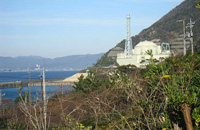 Fukui prefecture boasts a natural environment and quality of life with an all-time high level of healthy life expectancy, good living environment and high rate of women's participation in society, as well as a high level of academic and physical ability in its children. This is the host prefecture of "2010 Japan APEC Energy Ministerial Meeting", this June. The energy ministers from 21 countries and regions, mainly from Asia Pacific, will be gathering to discuss global warming issues and energy conservation measures. You will cover the prefectural approach tocentralization of energy R&D/human resources in Asia.
Fukui prefecture boasts a natural environment and quality of life with an all-time high level of healthy life expectancy, good living environment and high rate of women's participation in society, as well as a high level of academic and physical ability in its children. This is the host prefecture of "2010 Japan APEC Energy Ministerial Meeting", this June. The energy ministers from 21 countries and regions, mainly from Asia Pacific, will be gathering to discuss global warming issues and energy conservation measures. You will cover the prefectural approach tocentralization of energy R&D/human resources in Asia.
*****************************************************
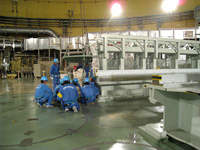 Fukui prefecture boasts a natural environment and quality of life with an all-time high level of healthy life expectancy, good living environment and high rate of women's participation in society, as well as a high level of academic and physical ability in its children. This is the host prefecture of "2010 Japan APEC Energy Ministerial Meeting", this June. The energy ministers from 21 countries and regions, mainly from Asia Pacific, will be gathering to discuss global warming issues and energy conservation measures.
Fukui prefecture boasts a natural environment and quality of life with an all-time high level of healthy life expectancy, good living environment and high rate of women's participation in society, as well as a high level of academic and physical ability in its children. This is the host prefecture of "2010 Japan APEC Energy Ministerial Meeting", this June. The energy ministers from 21 countries and regions, mainly from Asia Pacific, will be gathering to discuss global warming issues and energy conservation measures.
Since 1970 when the first commercial nuclear power plant started operating in Fukui, a total of 15 nuclear power plants are now located in the prefecture. Approximately 50% of all energy consumption in the Kansai area is provided by Fukui Prefecture, which means Fukui is the largest nuclear energy supplier and producer in Japan. Its contribution to the national energy policy and prevention of global warming as the biggest supplier of clean energy has been highly rated. This is the reason that the "2010 Japan APEC Energy Ministerial Meeting" will come to the prefecture.
In March 2005 the prefectural government announced its "Energy R&D Centralization Plan" by establishing a collaborative relationship of industry, electric company, university, research institute and central government with the aim of boosting its regional industries to encourage energy research and development mainly focused on nuclear power. Fukui Prefecture launched the"Fukui Cool Earth Next-generation Energy Industrialization Project" in 2008, and since then they have been promotingresearch and development of clean and stable energy with the goal of commercializing and industrializing it.
Human resource development in the countries and regions of Asia Pacific which have plans to construct nuclear power plants has become an urgent issue. Fukui currently accepts researchers and trainees from 12 Asian countries; however, they have a plan to accept more including from APEC countries in the future.
With less than six months to go before the "2010 Japan APEC Energy Ministerial Meeting" preparations are in full swing. This press tour presents an opportunity to have an interview with the governor of Fukui Prefecture, Mr. Issei Nishikawa. The tour will also visit the prefectural energy R&D hub, Wakasa Wan Energy Research Center, and Monju, the prototype Fast Breeder Reactor (FBR), which is now set for restart after a gap of 15 years. You will cover the prefectural approach to centralization of energy R&D/human resources in Asia.
The second day of the tour will take you to "Fukui Prefectural Dinosaur Museum", the leading-edge of dinosaur research in East Asia and visit Maruoka Castle, which is famous for the oldest standing castle in Japan.
※***Fukui Prefecture the host, and the Foreign Press Center, Japan have co-organized this press tour.
The Wakasa Wan Energy Research Center (Tsuruga City)
http://www.werc.or.jp/english/index.htm
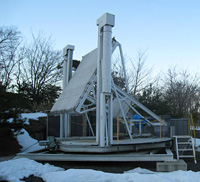 [b]Wakasa Bay area in the northwest part of Fukui is known as one of Japan's leading energy supply depots. It is because many of Japan's nuclear power plants are concentrated in this area. Since the Wakasa Wan Energy Research Center (WERC) opened in 1998 as the comprehensive R&D hub for energy it has been making efforts to utilize the resulting research in activating the community and contributing to the international community.
[b]Wakasa Bay area in the northwest part of Fukui is known as one of Japan's leading energy supply depots. It is because many of Japan's nuclear power plants are concentrated in this area. Since the Wakasa Wan Energy Research Center (WERC) opened in 1998 as the comprehensive R&D hub for energy it has been making efforts to utilize the resulting research in activating the community and contributing to the international community.
The proton cancer therapy research which began in 2003 has attracted much attention in recent years, and research targeting cancers of the prostate, liver, lungs, and head and neck has gained favorable results. On the basis of these achievements in the clinical studies, the Fukui Proton Cancer Therapy Center (tentative name) is to be founded in Fukui Prefectural Hospital in March 2011.
WERC has been working on breeding new ornamental flowers and plants, cereals and vegetables using ion-beam irradiation in collaboration with Fukui Agricultural Experiment Station and Fukui Prefectural University, and succeeded in producing a buckwheat strain with larger crops, and a new 'Koshihikari' rice strain, which is shorter than the original strain and is not beaten down in bad weather. WERC also succeeded in breeding a tomato which is easily grown and seldom splits, a petunia which has high ornamental value, and other items.
In the field of energy development research, solar energy utilization technology development has been making progress. WERC succeeded in the experiment of hydrogen generation by making solar furnaces with one of the world's largest Fresnel lenses. A small-scale solar furnace for cooking, which was collectively developed with local industries, drew attention at the World Future Energy Summit 2009, which was held in the United Arab Emirates in January 2009. This portable device provides a clean ultra high temperature with zero CO2 emission and is expected to be used in times of disaster and also in the countries and regions which have no infrastructure of gas or electricity.
In this tour you will visit the research center after a briefing on the outline on the center and their international contributions.
Prototype Fast Breeder Reactor, Monju (Tsuruga City)
http://www.jaea.go.jp/04/monju/EnglishSite/index.html
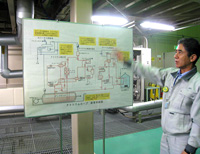 Monju operated by The Japan Atomic Energy Agency (JAEA) is a fast breeder reactor (FBR) which produces a greater amount of atomic fuel than it consumes, and is able to dramatically increase the effective utilization of uranium sources. The Monju reactor, a key facility for Japan's energy policy with the aim of establishing a nuclear fuel cycle, is now preparing to restart its operation by the end of March 2010. Although Monju was shut down after sodium coolant leaked in December 1995, JAEA started plant modification work on Monju in September 2005 to improve safety and reliability. All the inspection work before restarting Monju was finally finished in January 31 2010. The agency plans to resume operations after safety inspections of the facilities by the national government and upon obtaining the agreement of the prefecture, the city and the local people.
Monju operated by The Japan Atomic Energy Agency (JAEA) is a fast breeder reactor (FBR) which produces a greater amount of atomic fuel than it consumes, and is able to dramatically increase the effective utilization of uranium sources. The Monju reactor, a key facility for Japan's energy policy with the aim of establishing a nuclear fuel cycle, is now preparing to restart its operation by the end of March 2010. Although Monju was shut down after sodium coolant leaked in December 1995, JAEA started plant modification work on Monju in September 2005 to improve safety and reliability. All the inspection work before restarting Monju was finally finished in January 31 2010. The agency plans to resume operations after safety inspections of the facilities by the national government and upon obtaining the agreement of the prefecture, the city and the local people.
In March 2000 JAEA constructed the Sodium Handling Technology Center for training in sodium handling skills to enhance the security measures following the sodium leak accident. At the facility, the trainees are able to study extensively sodium handling technologies, which are essential technologies of fast reactors, such as sodium fire extinguishing, chemical and physical properties of sodium, sodium loop operating skill, counter training for sodium piping leakage, etc. The facility for sodium fire extinguishing is the only one in the world besides that in France.
The tour will take you to the containment vessel and the Sodium Handling Technology Center following a briefing on Monju.
IMPORTANT
*Please note that this tour is restricted to holders of the Gaimusho foreign press registration card because you will be visiting a nuclear restricted and nuclear radiation controlled area.
**As the tour will enter nuclear related facilities, each participant will be required to submit a copy of his/her passport and an application to JAEA. (We will send the application form to participants when confirmed.) Please also note that journalists from India, Pakistan, Israel, Iran, North Korea, and some others, mostly non-NPT (Nuclear Non-Proliferation Treaty) countries, will not be able to join the tour, because of problems in the application procedures.
***Rigorous security checks are conducted at the site, and there is a possibility that you may be required to change clothes.
****Photographing and filming in a nuclear restricted area are prohibited except in a few places. Please follow the instructions of the officials on duty.
Interview with Mr. Issei Nishikawa, Governor of Fukui
http://www.pref.fukui.jp/chiji/index.html (Japanese only)
http://www.nishikawa-issei.com/ (Japanese only)
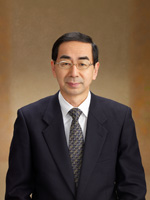 Born in Asahi-cho, Nyu-gun (now: Echizen-cho), Fukui Prefecture in 1945, Mr. Nishikawa was first elected Governor of Fukui in 2003 after serving as vice-governor of the prefecture 1995-2002. Currently, he is serving his second term. Mr. Nishikawa has drawn much attention for his unique policy proposals and is known as the originator of the Furusato Nozei, "hometown tax remission system" which was contained in the taxation reform plan of the ruling party in 2008.
Born in Asahi-cho, Nyu-gun (now: Echizen-cho), Fukui Prefecture in 1945, Mr. Nishikawa was first elected Governor of Fukui in 2003 after serving as vice-governor of the prefecture 1995-2002. Currently, he is serving his second term. Mr. Nishikawa has drawn much attention for his unique policy proposals and is known as the originator of the Furusato Nozei, "hometown tax remission system" which was contained in the taxation reform plan of the ruling party in 2008.
Fukui enjoys a high level of healthy life expectancy, a high level of children's academic ability, and a high rate of women's participation in society. Although the Japanese population hit an all-time low in 2005, Fukui was the only prefecture in Japan which raised its prefectural birthrate to 1.47, recording the second place after Okinawa. The birthrate kept rising and reached 1.54 in 2008. The figure also exceeded the national average of 1.37. Mr. Nishikawa has been promoting comprehensive countermeasures against low-birth-rate, such as child-care services, financial support, and creating a regional community friendly to child-raising.
Fukui, in collaboration with related local organizations, is now gearing up for "2010 Japan APEC Energy Ministerial Meeting". Governor Nishikawa says "Fukui has been maiking great contributions in the energy and environmental field, and this meeting gives us a great opportunity to make it known both at home and abroad". This press tour presents an opportunity to have an interview with Mr. Nishikawa about Fukui's efforts to host the upcoming major event.
Protecting "Japanese candle" culture, an energy from since ancient times –Kodaikokuya- (Fukui City)
http://www.rousokuya.com/
 Founded in 1865, Kodaikokuya, now with its current sixth-generation president, has beenmaking Japanese candles for more than 140 years although two major disasters, the Fukui air-raid in 1945 and the Fukui earthquake in 1948, left much destruction in that area. Techniques inherited from generation to generation, and a solid tradition, have built up a great relationship with their clients. Including Eiheiji temple, the head temple of the Soto Sect, and more than 4,000 temples of a variety of sects throughout the country, mainly Jodo Shinshu also known as Shin Buddhism, are their major clients. Unlike western style candles made of paraffin, a byproduct of petroleum refining, Japanese candles are made of wax from the nut of the Japanese sumac tree, rhus succedanea, and cylinder wick sticks with coiled paper around. The Buddhist altars of Jodo Shinshu are usually covered with gold leaf. The smoke of Japanese candles arises from plant materials, which keeps altars clean for a longer period of time. This is the reason that the culture of Japanese candles became well-established in the Chukyo or Hokuriku region including Fukui which has a thriving Jodo Shin culture.
Founded in 1865, Kodaikokuya, now with its current sixth-generation president, has beenmaking Japanese candles for more than 140 years although two major disasters, the Fukui air-raid in 1945 and the Fukui earthquake in 1948, left much destruction in that area. Techniques inherited from generation to generation, and a solid tradition, have built up a great relationship with their clients. Including Eiheiji temple, the head temple of the Soto Sect, and more than 4,000 temples of a variety of sects throughout the country, mainly Jodo Shinshu also known as Shin Buddhism, are their major clients. Unlike western style candles made of paraffin, a byproduct of petroleum refining, Japanese candles are made of wax from the nut of the Japanese sumac tree, rhus succedanea, and cylinder wick sticks with coiled paper around. The Buddhist altars of Jodo Shinshu are usually covered with gold leaf. The smoke of Japanese candles arises from plant materials, which keeps altars clean for a longer period of time. This is the reason that the culture of Japanese candles became well-established in the Chukyo or Hokuriku region including Fukui which has a thriving Jodo Shin culture.
Mr. Ryuichiro Otsu, the executive director and seventh generation of Kodaikokuya, seeks to make new style of Japanese candles while preserving the identity of tradition. In 2007 Mr. Otsu participated in the "Oishii Kitchen" project, fun dining with well designed kitchen utensils, conducted jointly by Fukui city government and local industries. He designed fashionable Japanese candles for dining, encouraging people to enjoy "slow food" until the candles burn out. Mr. Otsu now joins the new project, "292 Style", the original brand 100% made in Fukui, developed by together with industries and designers in Fukui. He activelypursues new product development for the metropolitan lifestyle or new market needs.
This tour will take you to the factory following a briefing by Mr. Ryuichiro Otsu on features of Japanese candles and the company's history.
*There are some restrictions on photographing and filming at the tour sites. Please follow the instructions of the officials on duty.
The Ichijodani Asakura Clan Ruins (Fukui City)
http://www.city.fukui.lg.jp/lang/english/kankou/ichijo.html
Located in Fukui City, the Ichijodani Asakura Clan Ruins are one of the most important relics of the Warring States Period (15th-17th centuries). They are the ruins of the castle town owned by five warring lords of the Asakura Family who ruled Echizen for 103 years. The castle town was built in the middle of the 16th century with a population of 10,000. However, when the Asakura Family was defeated by Oda Nobunaga in 1573, the town was burned down and its long history came to end. The first serious excavation research started in 1967, revealing the shape of the whole town, including the house of the lord, samurai residences, temples, houses of merchants, houses of craft workers, and streets. The research is still in the progress and has drawn much attention from history researchers. The ruins are designated as a special historic site and a special place of scenic beauty. The dug up articles were designated as important cultural properties. Other than the ruin, there are only five places with those three designations above, including the Golden Pavillion, Kinkakuji, in Kyoto, and Itsukuchima Shinto Shrine in Hiroshima.
In this tour your will visit the excavation sites and the newly-reconstructed town after a briefing on the progress of the current excavation research.
"Fukui Prefectural Dinosaur Museum", the leading-edge of dinosaur research in East Asia (Katsuyama City)
http://www.dinosaur.pref.fukui.jp/
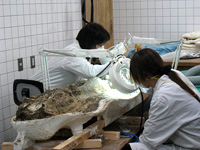 Opened in July 2007. It is the largest dinosaur museum in Japan, and also one of the "World's Three Great Dinosaur Museums" along with the Royal Tyrrell Museum of Palaeontology in Canada and the Zigong Dinosaur Museum in China. They have the largest number of the dinosaur fossils discovered in Japan. They keep trying new dinosaur fossil excavation and projects such as the reconstruction of the Fukuiraptor or Fukuisaurus. The museum also works with international research institutes for collaborative study and exchange. For example, the museum has carried out a joint research project in Thailand and China this fiscal year. A researcher from Zigong Dinosaur Museum in China is now at Fukui Prefectural Dinosaur Museum for a one-year-period. The number of visitors to the museum has been increasing year by year, and more than 400,000 people have already visited the museum in this fiscal year. Eighty percent of all the visitors were from outside Fukui. It is one of the most popular cultural facilities in the prefecture. About 40% of all the attendees are repeat visitors because the museum displays are designed to give visitors always something new. They purchased the world's largest Camarasaurus fossil from Wyoming, USA for the celebration of the 10th anniversary of the museum this coming July. In October 2009 the fossil bones, set in plaster, were transported by air to the museum. They began the process of cleaning them at a fast pace.
Opened in July 2007. It is the largest dinosaur museum in Japan, and also one of the "World's Three Great Dinosaur Museums" along with the Royal Tyrrell Museum of Palaeontology in Canada and the Zigong Dinosaur Museum in China. They have the largest number of the dinosaur fossils discovered in Japan. They keep trying new dinosaur fossil excavation and projects such as the reconstruction of the Fukuiraptor or Fukuisaurus. The museum also works with international research institutes for collaborative study and exchange. For example, the museum has carried out a joint research project in Thailand and China this fiscal year. A researcher from Zigong Dinosaur Museum in China is now at Fukui Prefectural Dinosaur Museum for a one-year-period. The number of visitors to the museum has been increasing year by year, and more than 400,000 people have already visited the museum in this fiscal year. Eighty percent of all the visitors were from outside Fukui. It is one of the most popular cultural facilities in the prefecture. About 40% of all the attendees are repeat visitors because the museum displays are designed to give visitors always something new. They purchased the world's largest Camarasaurus fossil from Wyoming, USA for the celebration of the 10th anniversary of the museum this coming July. In October 2009 the fossil bones, set in plaster, were transported by air to the museum. They began the process of cleaning them at a fast pace.
In this tour you will be visiting not only the museum but the Fossil Preparation Lab behind the scenes.
Maruoka Castle (Sakai City)
http://www.city.fukui-sakai.lg.jp/static/00000027/002/00000099.html
 Maruoka Castle is a hirayama-style castle (castle on a high hill above the town) built in 1576 by Katsutoyo Shibata, a nephew of Katsuie Shibata. This castle is the oldest remaining castle in Japan and was selected as one of the 100 best castles in Japan in 2006. Akira Kurosawa, the filmmaker, visited the castle, and it became the model of the burning castle (san no jo) in his famous film "Ran". On the castle ground, there is a monument to a letter by Sasaemon Shigetsugu Honda to his wife; Let me drop you a line. Don't make Osen cry, but make the horse grow. Sasaemon Shigetsugu was a retainer of Ieyasu Tokugawa and had a connection with Maruoka Town where the castle is located. Based on this story, the town annually has been holding the "Ippitsu Keijo Award (Drop a Line Award)" since 1993, which is a contest for the shortest letters in Japan, aiming for renaissance of the culture of letter writing. The award receives more than 30000 entries every year both from home and abroad. The award is known as a cultural activity produced by a small town in a rural area, attracting nationwide attention
Maruoka Castle is a hirayama-style castle (castle on a high hill above the town) built in 1576 by Katsutoyo Shibata, a nephew of Katsuie Shibata. This castle is the oldest remaining castle in Japan and was selected as one of the 100 best castles in Japan in 2006. Akira Kurosawa, the filmmaker, visited the castle, and it became the model of the burning castle (san no jo) in his famous film "Ran". On the castle ground, there is a monument to a letter by Sasaemon Shigetsugu Honda to his wife; Let me drop you a line. Don't make Osen cry, but make the horse grow. Sasaemon Shigetsugu was a retainer of Ieyasu Tokugawa and had a connection with Maruoka Town where the castle is located. Based on this story, the town annually has been holding the "Ippitsu Keijo Award (Drop a Line Award)" since 1993, which is a contest for the shortest letters in Japan, aiming for renaissance of the culture of letter writing. The award receives more than 30000 entries every year both from home and abroad. The award is known as a cultural activity produced by a small town in a rural area, attracting nationwide attention
Tour itinerary and application details:
1. Itinerary:
Thursday, March 4th
07:33 Leave JR Tokyo Station by Hikari 503
09:49 Arrive at JR Maibara Station
09:59 Leave JR Mibara Station by Shirasagi 3
10:28 Arrive at JR Tsuruga Station
11:00-12:20 Wakasa Wan Energy Research Center
12:20-13:00 Lunch
14:00-16:00 Fast breeder reactor Monju
17:30-18:20 Interview with Mr. Issei Nishikawa, Governor of Fukui
18:30 Check in at Hotel Fujita in Fukui City
19:00-20:30 Welcome dinner hosted by Fukui Prefecture
Friday, March 5th
08:45 Laeve hotel by chattered bus
09:00-10:00 The Japanese candle maker, Kodaikokuya Shoten K.K.
10:30-11:30 The Ichijodani Asakura Clan Ruins
12:00-13:00 Lunch
13:50-14:50 Fukui Prefectural Dinosaur Museum
15:40-16:00 Maruoka Castle
16:00-16:40 Leave for Komatsu Airport
17:15 Leave Komatsu Airport for Haneda Airport by ANA 758
18:25 Arrive at Haneda Airport
2. Qualification: Bearer of Gaimusho foreign press registration card
3. Expenses: 13,000 yen per person including transportation, meals, and accommodation
* FPC will later inform the participants of methods for payment, cancellation fee etc.
4. Participants: Limited to the first approx 15 applicants on a first-come first-served basis but please note that journalists from India, Pakistan, Israel, Iran, North Korea, and some others, mostly non-NPT (Nuclear Non-Proliferation Treaty) countries, will not be able to join the tour, because of problems in the application procedures.
(Only one reporter and one photographer from each company, but two participants from each TV team will be acceptable.)
5. FPCJ Contact: Ms. Suzuki and Mr. Yano (Tel: 03-3501-5070)
6. Remarks:
*Fukui Prefecture and FPCJ will not be liable for any inconvenience, trouble or accident that might occur in the course of the tour.
**There are some restrictions on photographing and filming at the tour sites. Please follow the instructions of the officials on duty.



